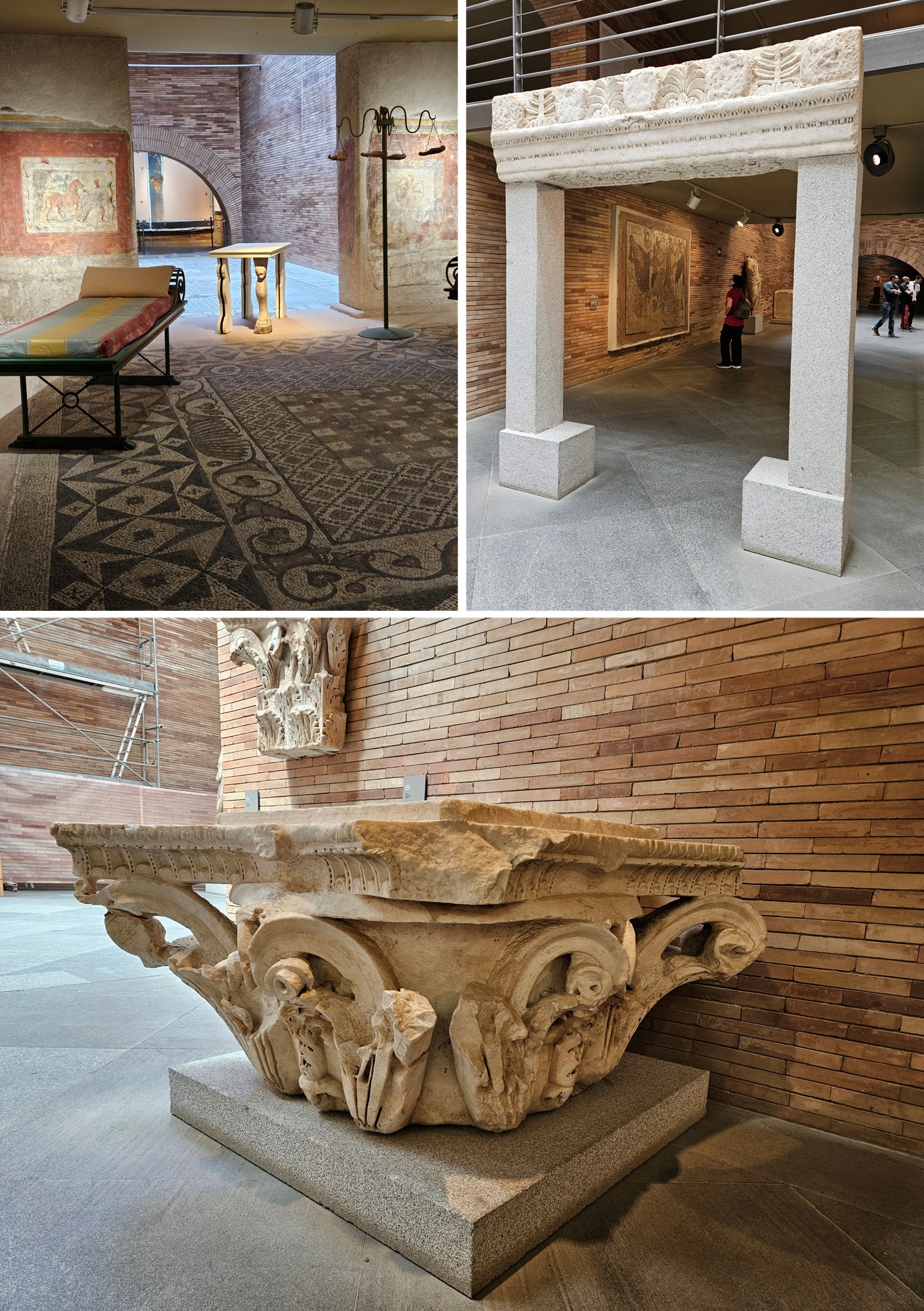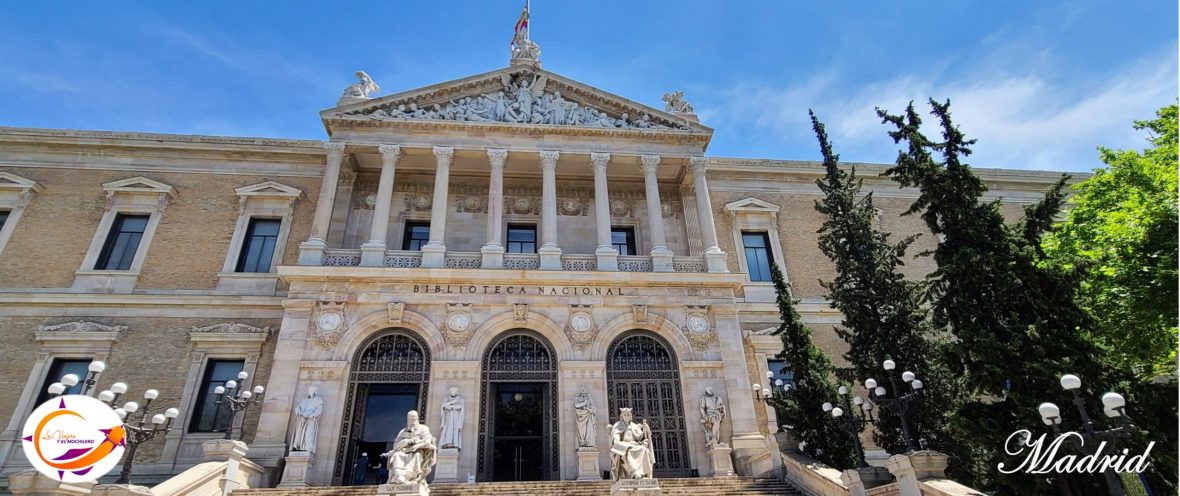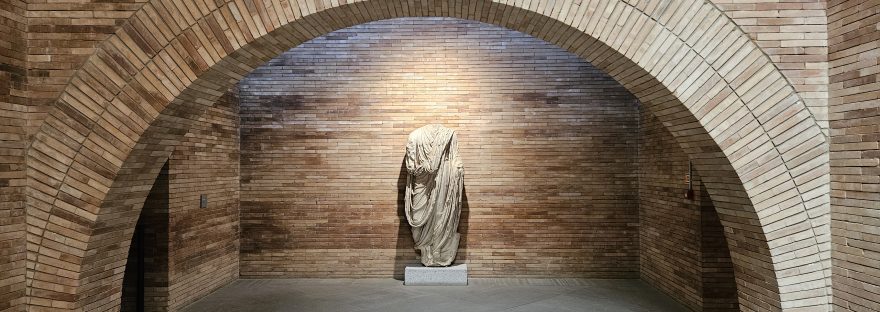The National Museum of Roman Art in Mérida allows us to gain insight into the most varied aspects of the daily life of the early inhabitants of Mérida. Inside, we can admire one of the finest collections of Roman sculpture and mosaics on the Iberian Peninsula.
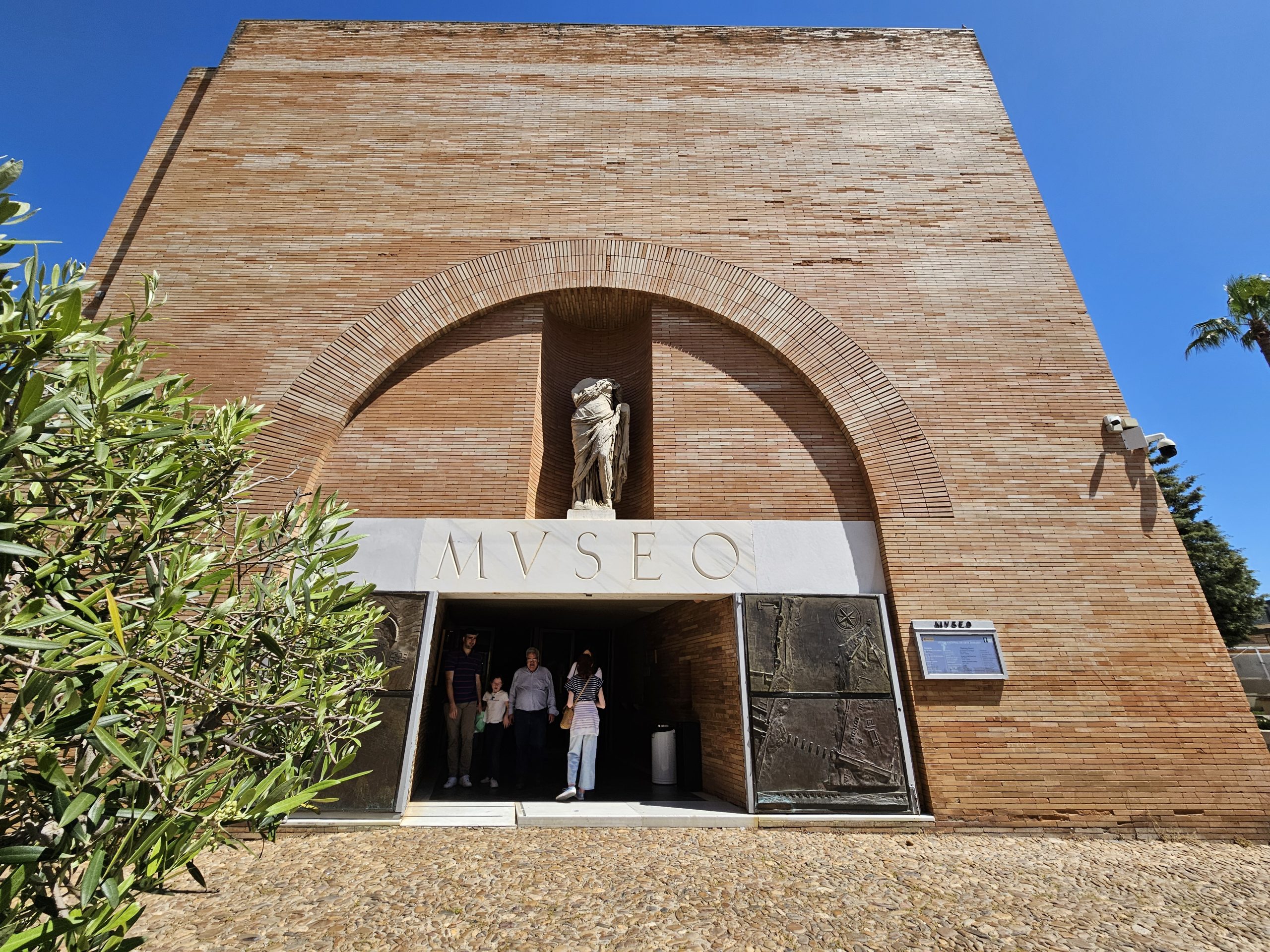
The main objective of architect Rafael Moneo Vallés, who was in charge of the design and construction of the National Museum of Roman Art (MNAR) in Mérida, was to give the museum a character and presence reminiscent of a Roman building. He definitely succeeded in connecting the architecture of this museum, both in the materials used and in its content. Although at first glance, this colossal structure may seem simple in style, it actually employs a complex architectural concept, where the spaces are carefully designed and historical associations are presented with great flair.
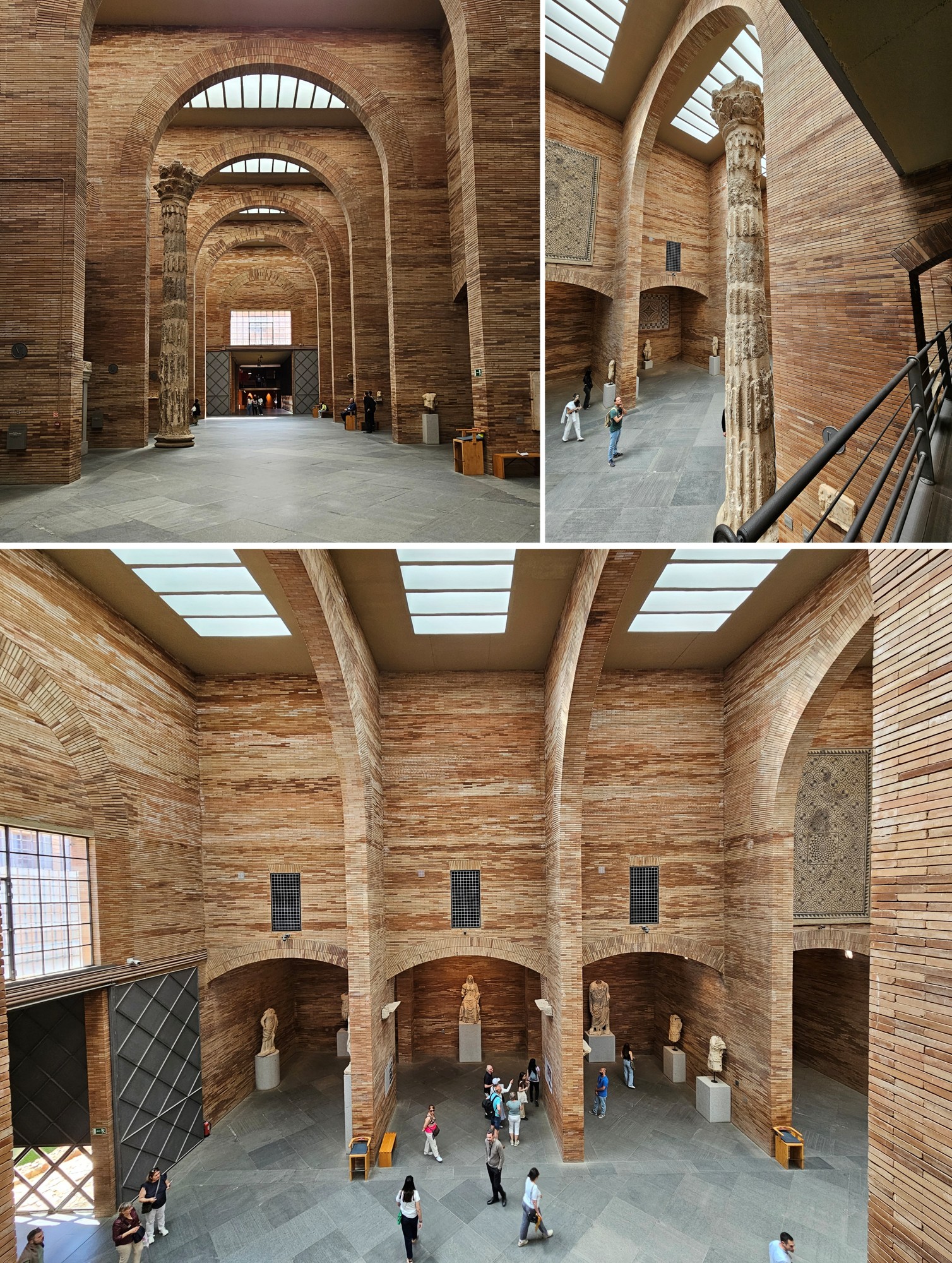
The structure is composed of two volumes connected by a bridge where the continuous use of the semicircular arch, along with the use of brick and concrete, helps to harmoniously integrate the spaces. Furthermore, its central lighting extraordinarily enhances this harmony and functionality.
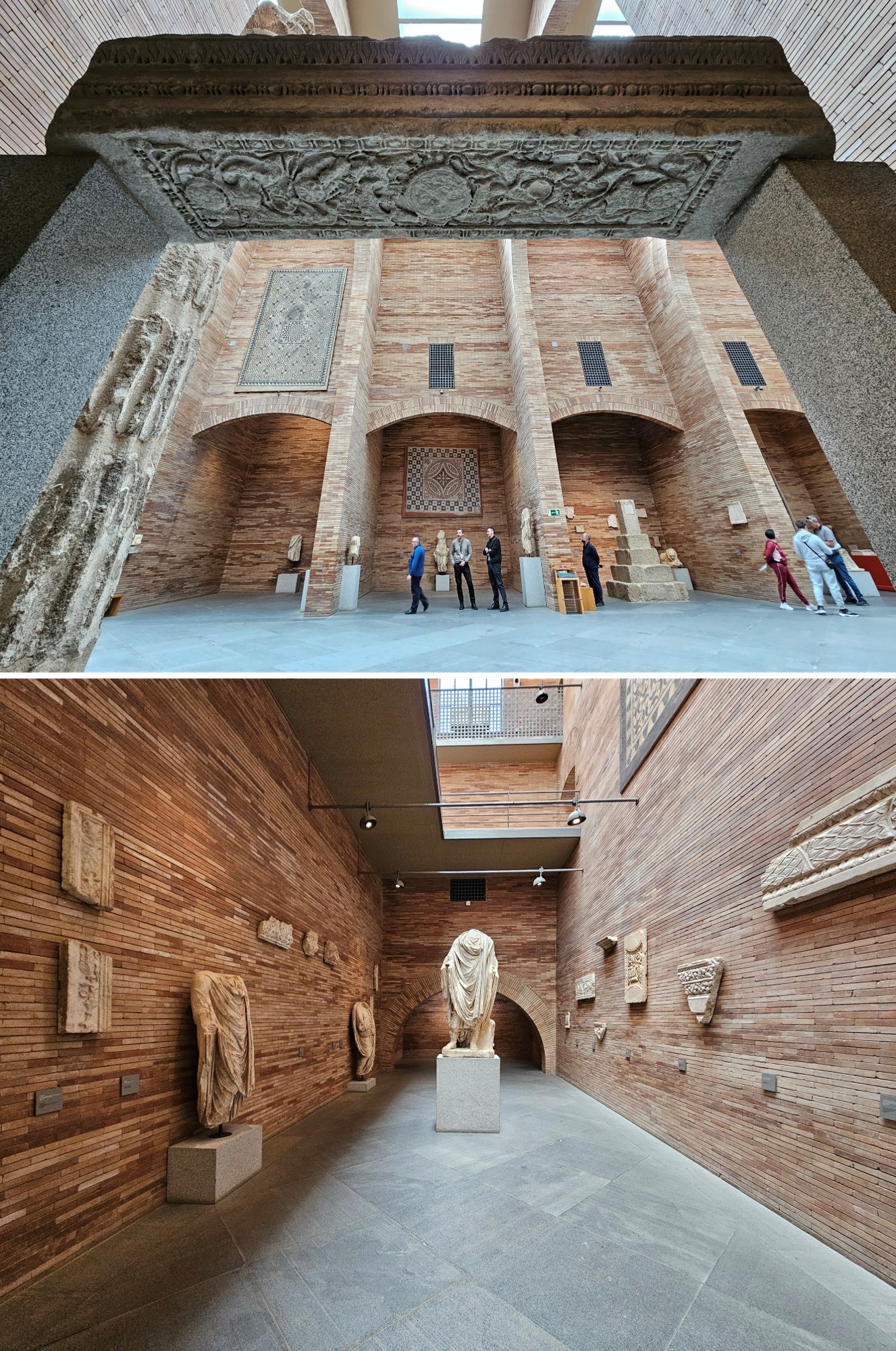
The National Museum of Roman Art in Mérida, designed by architect Moneo Vallés beginning in the fall of 1979 and built between 1980 and 1986, quickly gained international acclaim. It was not only recognized as one of the Navarrese architect’s first masterpieces and the first of his creations to be valued abroad, but also as the work that inaugurated a fruitful period in Spanish architectural production, capturing the attention of architects and critics from around the world.
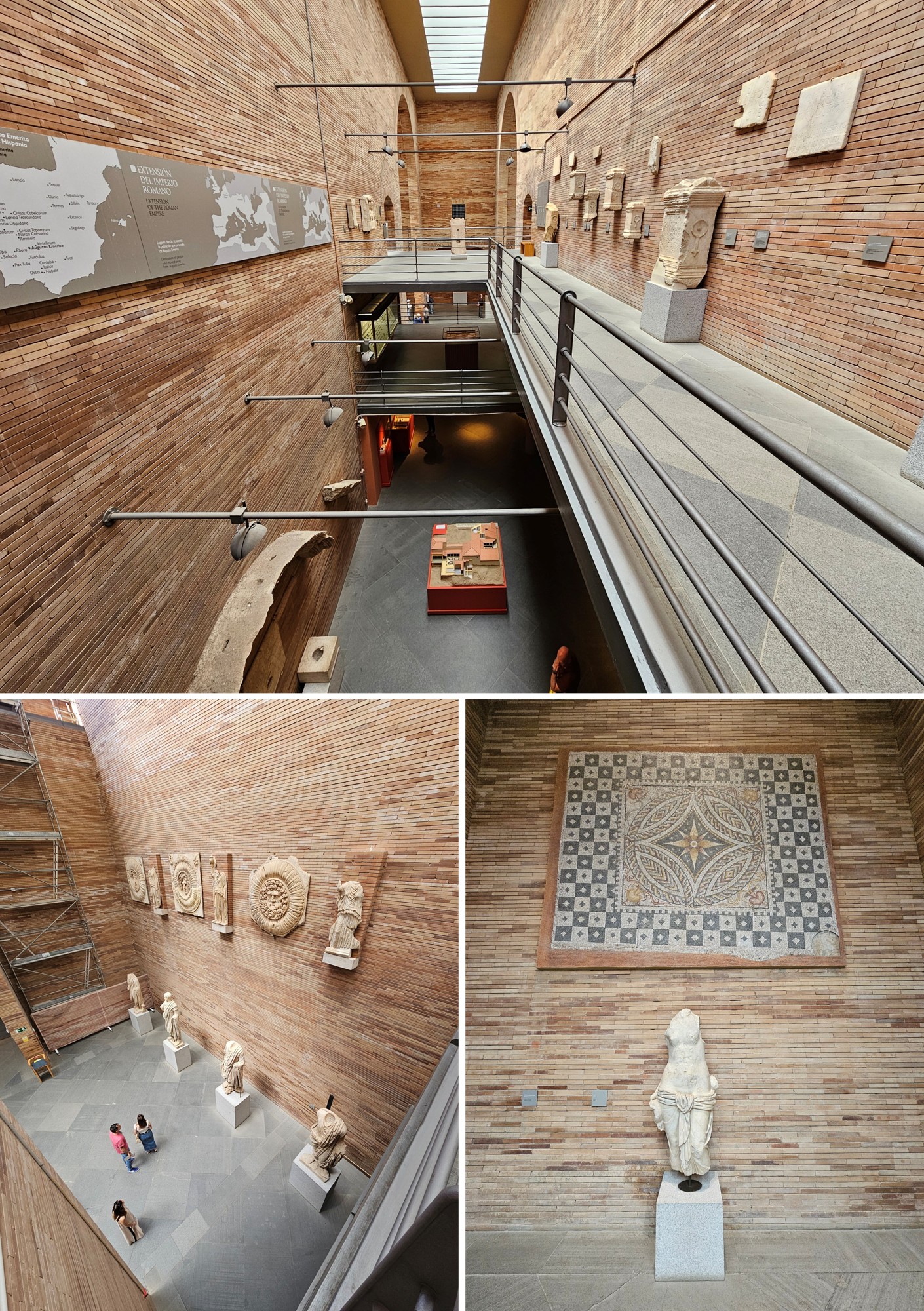
The space is organized over several floors and areas, displaying objects from excavations both in what was known as Augusta Emérita (Mérida) and other areas of Extremadura. Inside, it houses artifacts from Roman civilization, from the theater and the Roman house, among other places.
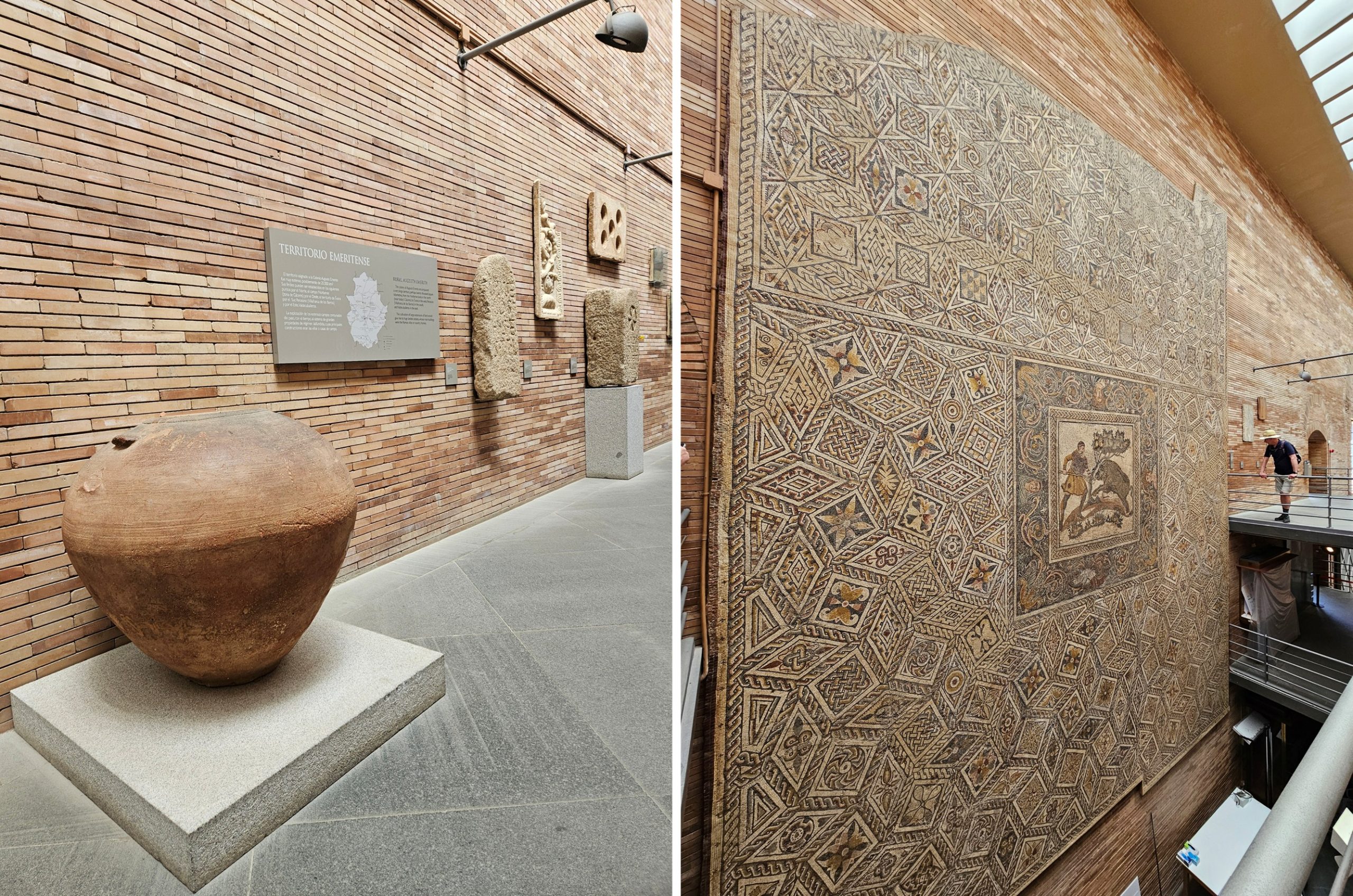
It contains tombstones, ceramics, glass, coins, sculptures, paintings, mosaics, and everyday objects that give us an idea of life in Roman Mérida. It is worth noting that the quantity, quality, and size of the mosaic pieces exhibited in this museum is truly impressive.
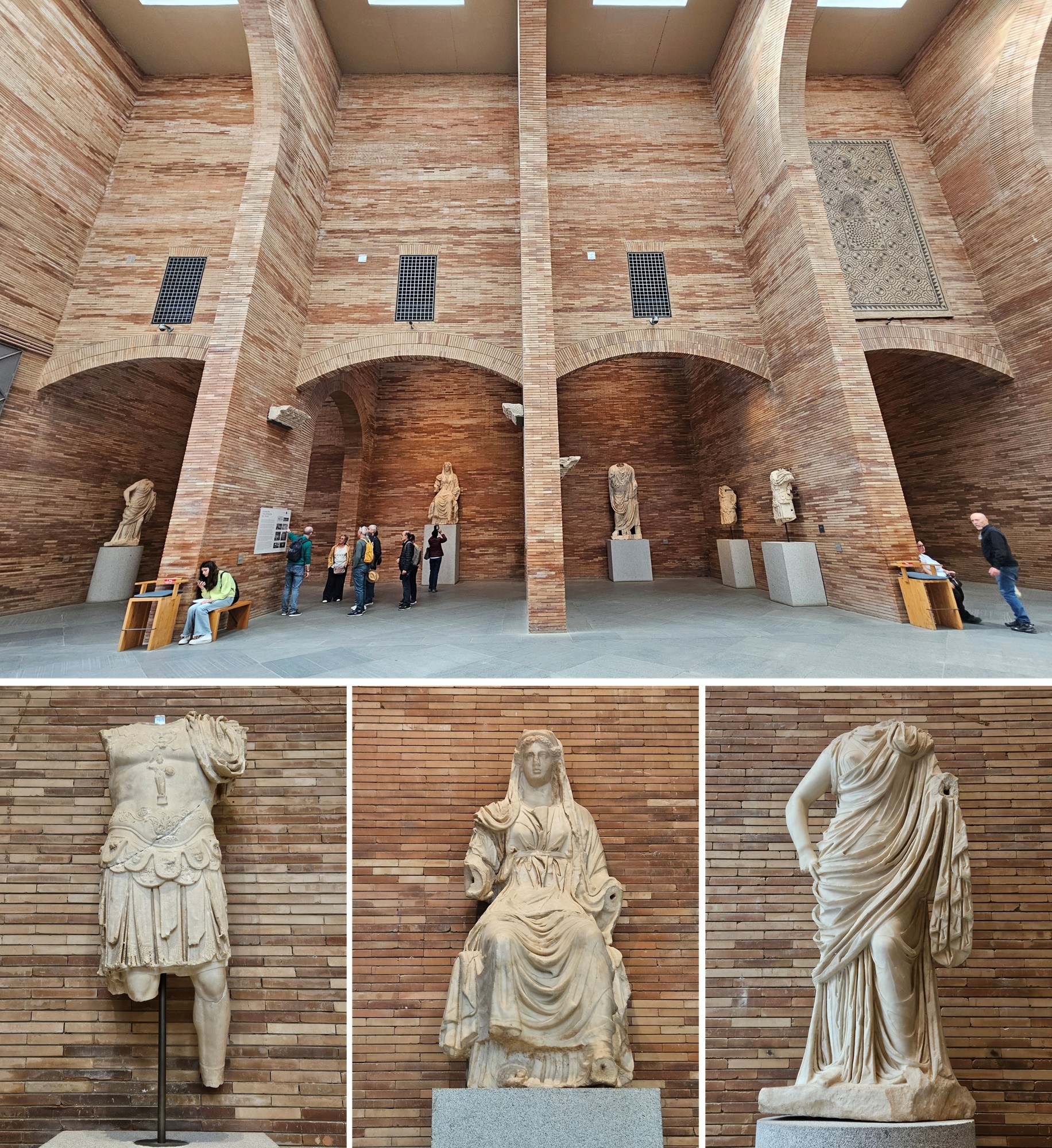
The ground floor of the National Museum of Roman Art in Mérida is dedicated to public performances, domestic life, and religion. The first floor displays Roman crafts and glass, and the second floor houses collections from modern Mérida. It also houses a crypt and a Visigothic collection in the former Church of Santa Clara, one of its locations.
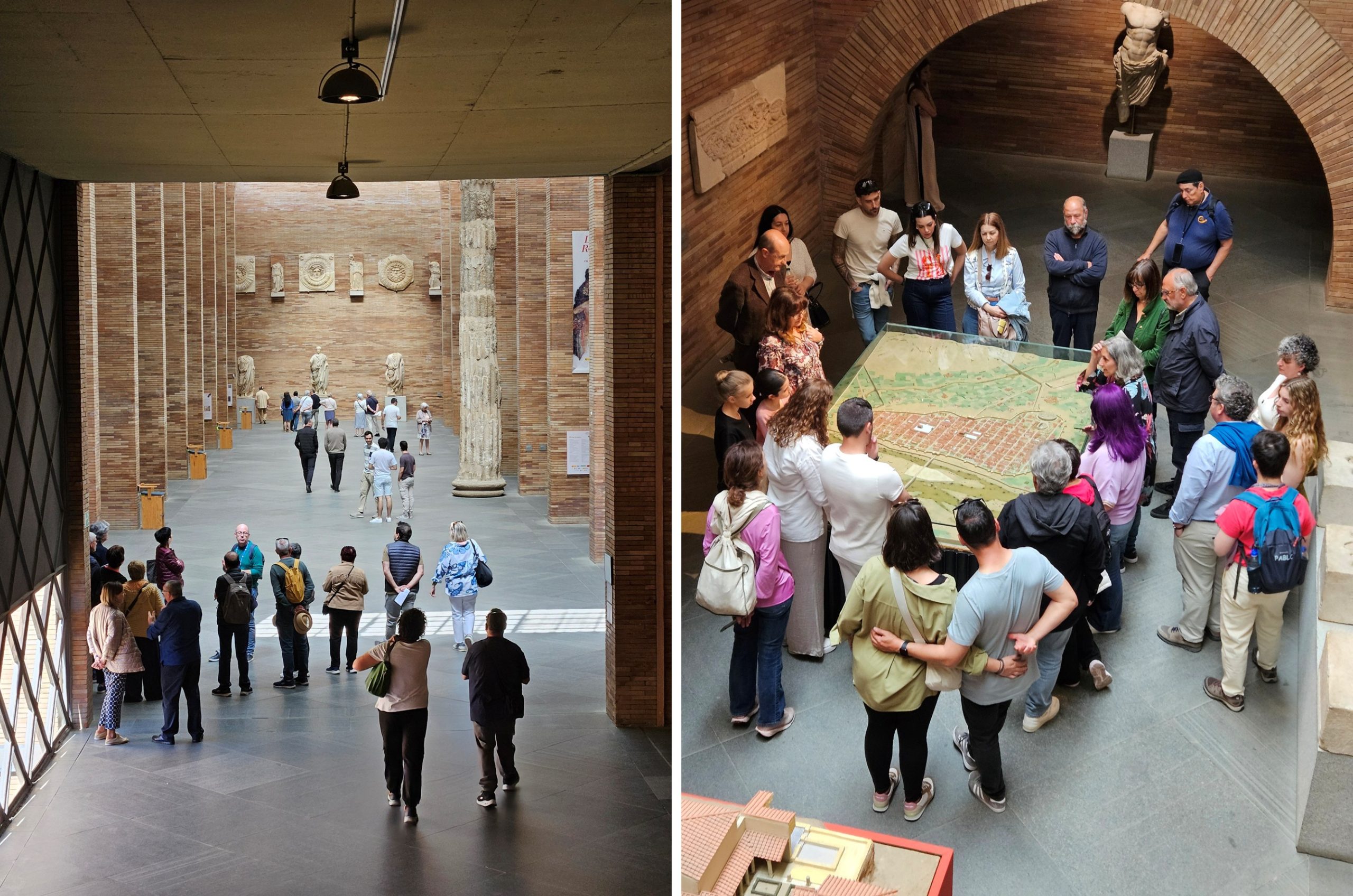
The National Museum of Roman Art of Mérida is a center dedicated to the research and dissemination of Roman culture. In addition to housing archaeological finds from the ancient Roman city of Augusta Emérita, it also organizes congresses, colloquia, lectures, courses, exhibitions, and numerous national and international activities. It is one of the buildings declared a World Heritage Site by UNESCO in 1993, and is part of the Mérida Archaeological Complex.
